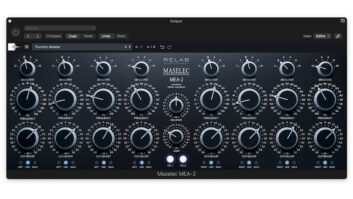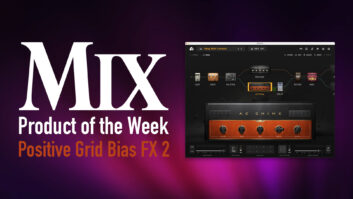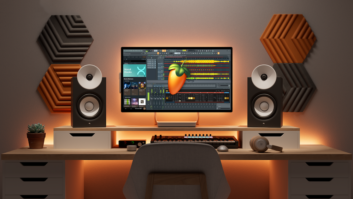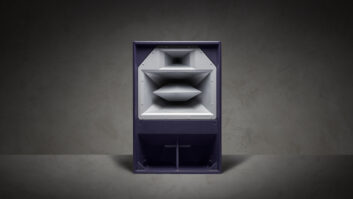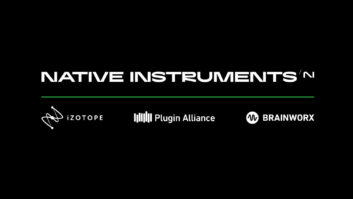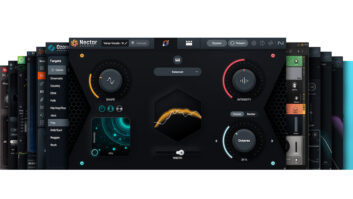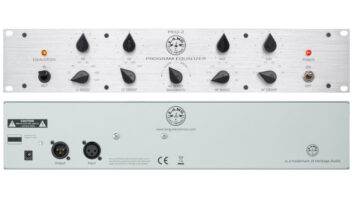In the sampling world, cross-compatibility with file formats and a friendly user interface are king. But if you want to hang with the big dogs, you’ve got to have all of this and more to be considered a winner. In my experience, Native Instruments’ Kontakt has always been a contender, so I was very interested to check out the upgrade.
Kontakt 2 offers many improvements over the original — a powerful sampler in its own right enabling multitimbral operation, powerful layering and handy signal processing. The latest incarnation takes sampling to the next level, offering a new user interface, 42 surround formats and much more.
A BEVY OF NEW FEATURES
Enhancements include a newly designed user interface, an undo/redo history, and mapping and loop editors that can be opened as separate windows. Other features include keyboard shortcuts to speed workflow and a new master section that enables control of global tempo and master tuning, among other things. There’s also a virtual keyboard that can be toggled on and off. In terms of compatibility, Kontakt 2 now works with 25 library formats and five sample formats, enabling friendly play with nearly every possible sample format on the market. A bank module allows you to load up to 128 instruments, switchable by program change, which is useful in live performance situations.
A total of 42 different surround sound formats are supported, representing up to 16 discrete channels. Surround panning, import of .WAV/.AIFF surround samples and surround effects are all useful tools. Kontakt 2 also features a new high-performance audio engine with unlimited voices and 64-part multitimbrality. The Sample Purge feature enables you to remove samples that are not used in your arrangement, saving valuable RAM.
The company has also developed the Kontakt Script Processor, which enables the user to program instrument modules with scripts. This is a powerful tool to create exotic instrument simulations, chord generators and arpeggiators. Among Kontakt 2’s diverse and useful suite of effects is a new convolution processor, enabling reverb and other special effects. Many impulse responses from real concert halls and echo chambers are included; you can also import your own. There are also new synth filters, namely the Pro-53 classic analog, and a 4-stage ladder filter for tweaking any sample you want.
Numerous new browser functions enable convenient and simplified workflow. An enhanced loop editor simplifies loop slicing. Surround loops are handled just as easily as mono loops. Kontakt 2 enables the import of REX and Apple loops, along with slice information.
Kontakt 2 ships with a new instrument library featuring orchestral instruments from the Vienna Symphonic Library, killer grand pianos, electric pianos and organs, other acoustic instruments, drums of every stripe, synthesizers and an abundance of loops. There aren’t many samples missing from this library, and the quality of the instruments is truly excellent.
INITIAL KONTAKT
I installed Kontakt 2, started noodling and found that the interface is pretty self-explanatory. The browser easily enables location of samples and presets, among other items. I started out with symphonic instruments, and I was impressed with their sound quality. More importantly, however, the instruments’ response to the keyboard touch was better than I’ve ever seen in a sampler. I continued on through pianos, other electric keyboards and guitar samples. I played endlessly with various effects and consistently found myself thrilled with the instruments’ playability. Some instruments use hundreds, if not thousands, of individual samples, and although they take some time to load, the wait is worthwhile because all those samples lend to the expressiveness of the instrument.
I was easily able to sequence music, and Kontakt 2’s multitimbrality enabled me to literally put together an entire piece using nothing else. Sometimes, when using a “be-all/end-all” module, I find myself wishing for a slightly better synth sound or maybe a punchier drum kit. Not in this case. For me, Kontakt sounds were pretty much grab-and-go; I didn’t have to do a lot of deep parameter tweaking to put together a piece of music. This is an instrument that is clearly intended for musicians to be able to sit down and compose and play. It’s also satisfying for tweakheads such as myself.
FINAL KONTAKT
I love the workflow improvements in Kontakt 2, and as a result, I will use it far more frequently than I did with the original version. The surround features are excellent, as is the convolution reverb. I also love the sound of the Pro-53 classic analog filter and found it useful for tweaking all kinds of sounds. The effects, in general, lend a huge amount of power, because it’s plausible to drive Kontakt 2 with a sequencer and mix within Kontakt.
That aside, Kontakt 2 resides proudly in the very short list of virtual samplers worthy of consideration by serious users.
Native Instruments, 323/467-5260, www.native-instruments.com.
John McJunkin is the principal of Avalon Audio Services in Phoenix.

